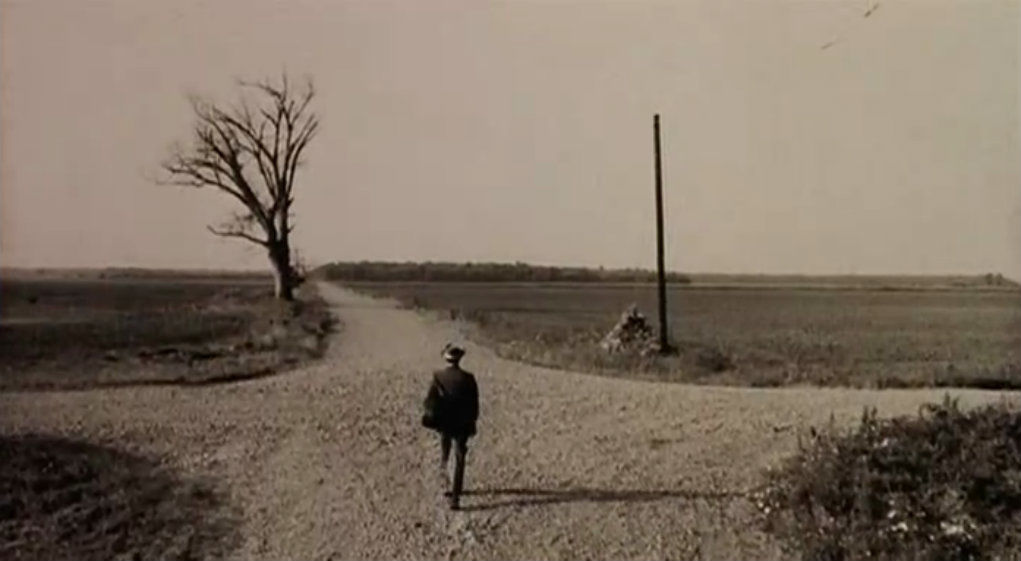Saturday, March 14 will mark the 34th Anniversary of the release of the film, Crossroads. The coming-of-age musical drama starring Ralph Macchio, Joe Seneca, and Jami Gertz became instantly popular among members of the blues community, due to its semi-fictional Robert Johnson story line connection, and tons of killer music performed by artists including Arlen Roth, Ry Cooder, Steve Vai, and Sonny Terry.
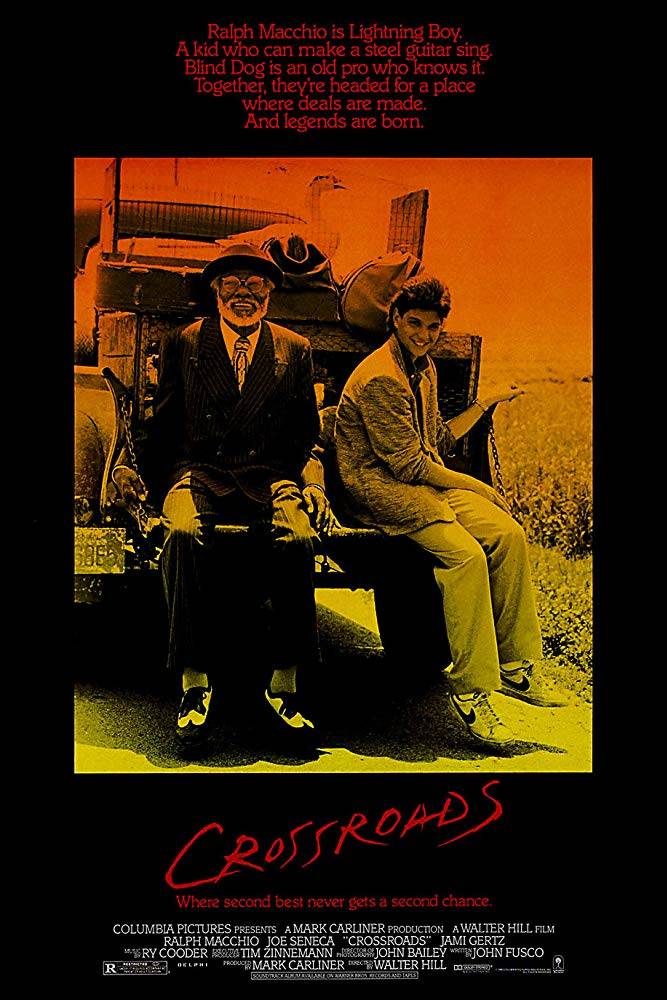
Almost everyone remembers the “Cuttin’ Heads” scene. Who could forget a guitar duel between Lightnin’ Boy Martone and Jack Butler at a club in hell? But there’s so much more to the film than just that finale. To learn more about Crossroads we went to the man who wrote it; singer-songwriter-screenwriter John Fusco.
The original story came from a school thesis – Fusco describes what gave him the idea in the first place. “I wrote Crossroads as my Bachelor’s thesis as I had only come off the road as a traveling musician in the south a few years earlier,” he shared. “In fact, I was a high school dropout and had to go to night school and get a GED diploma to try to get accepted into NYU’s Tisch School of the Arts. I came into the Dramatic Writing Program with a satchel full of stories from the road.
“(I) Had long been fascinated by the Robert Johnson story — not only because he was the King of the Delta Blues and his music held canonical status among my blues-rocker influences like the Allmans — but also because his story was so rich in mythic Americana. Which is the stuff I love as a writer. I had actually come up with the idea during the summer before I started at NYU, while I was working a blue collar job to pay for school. My girlfriend (now my wife) was working at an assisted living home and she called me to tell me that an elderly African-American man from the south had been admitted, and that he played harmonica.
“On my drive over to meet him I did the writer’s ‘what if’ game. What if he turned out to be a forgotten blues legend? And what if he wanted to get back home and settle unfinished business. A deal at the crossroads? And that’s how it all started. I had already traveled around the South with old blues guys, so I had the experience to create a drama around that concept. I basically went down the Robert Johnson rabbit hole and put the pieces together, centering on the line from the titular song, ‘my friend boy Willie Brown.’ Who was he? Could he be this mysterious cat in the rest home?”
The story was so good, it won an award – Fusco’s student screenplay won first place in the national FOCUS Awards (Films of College and University Students) and was sold to Columbia Pictures while Fusco was still a student. It may have been a bit overwhelming to a young college student at first.
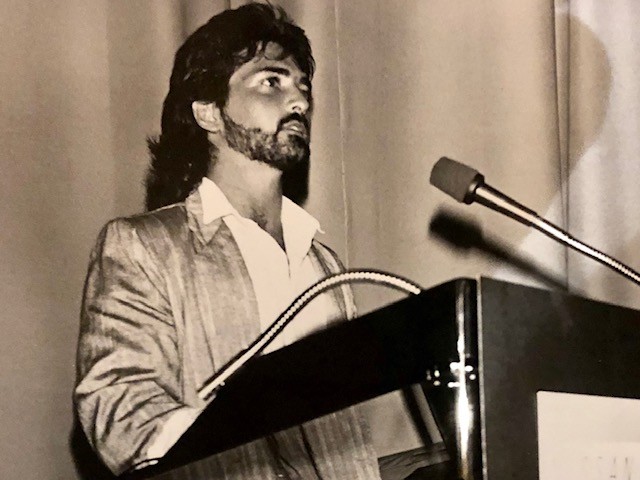
“I was 24 and became something of a curiosity in Hollywood,” Fusco told us. “Was this a talented NYU film student, or a formerly homeless kid who came off the road and wrote something strangely original? I was broke and tending bar while going to school full-time, so winning the FOCUS award and being flown to L.A. had my head spinning. Columbia Pictures bought the script from me for six figures, and the next thing I knew, every major Hollywood director wanted to do it as did every young star. Lasse Hallstrom, the Oscar-nominated Swedish director behind My Life As A Dog wanted to do it and the producer did ask my feelings about it. I was all-in. Lasse fucking Hallstrom?? But then Walter Hill read the script and wanted it. Hill was an idol of mine, so he became my #1 choice. The studio and producer felt that he could capture the rugged road quality and American mythos.”
Lots of young stars came to casting calls – “Sean Penn wanted to play the Lightnin’ Boy,” Fusco says. “So did Tom Cruise. But Ralph was hot off Karate Kid and box office ruled the day. Karate Kid ultimately hurt Crossroads from standing on its own. Truth be told, I never saw the movie before I wrote Crossroads. Mentor-student cross-cultural material has always been part of my story well. I think you can look at nearly every movie I’ve done (Young Guns, Young Guns II, Thunderheart, Hidalgo, etc) and see that. But because of Ralph’s famous presence the similarity in storylines was blown out of proportion. Critics like to go for low-hanging fruit and that similarity, made bolder because of the lead, did my film a disservice. Imagine Crossroads directed by Lasse Hallstrom and starring Sean Penn. By the way, Ralph passed on Back to the Future in order to do Crossroads.”
How to pick the perfect bluesman – Joe Seneca was ultimately chosen to play the role of Willie Brown. Besides being a seasoned actor, Seneca was also a singer-songwriter performing at upscale clubs in New York, and writing such hits as “Talk to Me,” and “Break It to Me Gently.”
Fusco told us, “I wanted real-life bluesman Roy Dunn to play Willie Brown. I got to know Roy from a stint he was playing at a bar called Preachers on Bleacker Street in Greenwich Village, near the NYU campus. I would work on my script at a back table, listen to Roy, and then hang out with him. So he was a real influence in my shaping the character. So was Sonny Terry, who I knew and idolized and who would later become the harmonica behind the movie! I brought the producer to come see him, and he was smart enough to know that a role that big required a real actor. So he then took me to Broadway to see Ma Rainy’s Black Bottom. We fell in love with Joe Seneca — and Bob Judd (who plays Scratch in the film). Joe was a remarkable talent and also the real deal as a singer-songwriter. And what a gentleman. I loved the man.
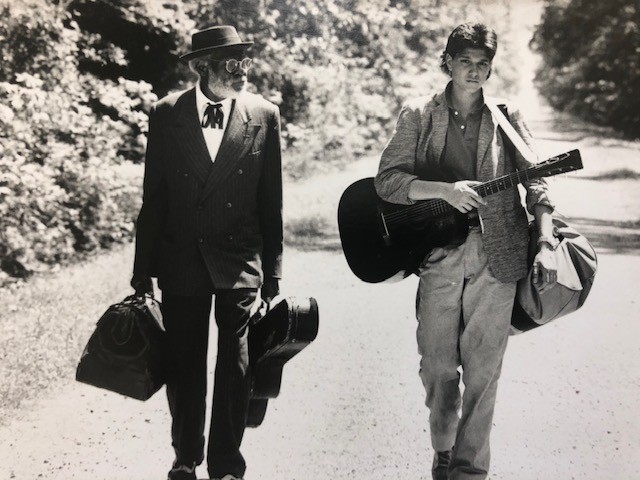
And what about “guitarist from hell” Jack Butler? – In the film’s decisive scene, Lightning Boy stands in for Willie to cut heads against Jack Butler. The outcome would be nothing less than Willie’s (and Eugene’s) immortal souls. Butler, as described by Scratch “discourages a lot of up and coming boys,” and therefore had to be somebody with major chops. The final choice as we all know was virtuoso rock guitarist Steve Vai. But there were plenty of other players that wanted that part.
“I wish I had more insight into how the final choice was made,” Fusco says. “Again, I was a 24 year-old former bar musician being told that Jimmy Page, Johnny Winter, and Keith Richards all wanted to play a role that I created. Ry (Cooder) and Walter (Hill) were very secretive about this particular process. I remember getting the phone call that a decision was made and locked — and that it would be Steve Vai. I admit that I was thrown and confused, but it all became clear very quickly that Ry knew what he was doing and it was the best choice of all.
“I ran into Jimmy Page in a bar in the West Indies years later. True story. He told me how badly he wanted that role. We hung out for days and he played his acoustic guitar in me and my wife’s cabana while he was writing new songs.”
According to the film’s musical consultant Arlen Roth, both Frank Zappa and Stevie Ray Vaughan were briefly considered as well.
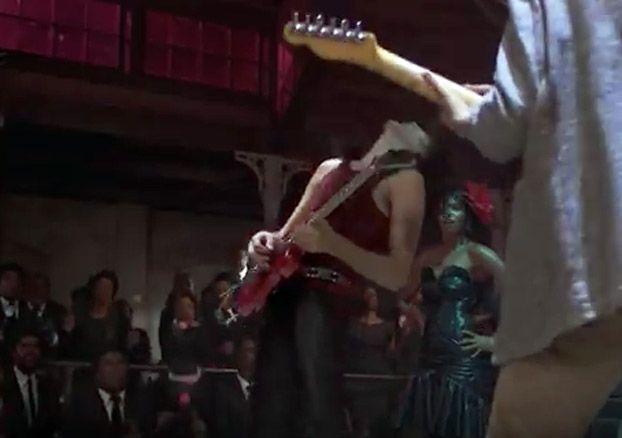
Did Macchio actually play guitar in the movie? – The short answer is yes, in some parts. Director Walter Hill had hired guitarist Arlen Roth as a musical consultant and to teach Macchio to play, sort of. Roth visited Macchio’s home, four days a week for months teaching the young actor blues techniques, including finger-picking and slide. Although Ralph was set on actually playing in the film, Roth, Cooder and Hill knew that would be impossible, but Roth tutored Macchio well enough for him to fake the parts on screen.
Fusco adds, “He (Roth) was first and foremost the guy that Ry sought out to assign to Ralph as his guitar mentor and ‘crash course’ teacher. They pretty much lived together for the few months leading up to production. Arlen was also on set all the time and a part of the amazing musical pedigree we were absorbing every day, down there in the Delta. Ry and Steve Vai are mostly responsible for the licks we hear when Ralph plays. But I want to emphasize that Ralph did much of his own playing and it was impressive. He is a smart and diligent kid. Wait, he’s not a kid any more, but he still looks the same.”
As a side note, to this day Arlen Roth has not been officially credited for his work on the film. However, Fusco, Vai and others remember his importance. In a 1987 interview with Guitar World Vai said, “Arlen worked very hard on the project. He taught Ralph Macchio how to hold and finger the guitar to make it look realistic. And he recorded a lot of the slide guitar parts throughout the film, along with Ry.”
Were the “jook joint” scenes filmed in actual Delta clubs? – Although there was a lot of filming that took place in the Delta, the “jook scenes” were actually filmed on a sound stage. That’s not to say there weren’t some other scary times.
“Shit got real,” says Fusco matter-of-factly. “We had LA crew mixed with local crew and there was some palpable prejudice. Some of our African-American camera guys were not accustomed to being called ‘boy.’ One night, Joe Seneca and I went to dinner at a restaurant on the Mississippi River. The place was less than half-full and they would not seat an old black man and a long-haired white boy. Then I remember someone yelling, “Hey!” And it was the late blues harp monster Juke Logan. He and Arlen were sitting at a table and they called us over. The staff didn’t like it, but we sat down.
“We did scout into the deepest nooks of the Delta, to jooks and fish frys, searching for our ‘house band.’ Me, Ry, Arlen, Juke Logan — getting paid to explore jook joints and find undiscovered blues talent. Like Frank Frost (who along with John Price, Otis Taylor, Richard “Shubby” Holmes, and Terry L Evans made up the house band). We did not shoot in actual jooks, we built them.
“Look, just a few years earlier I had been right there where we were shooting, and I saw a lot of shit. It found its way into the script. You know the scene with the guy getting jumped in the motel room with the girl? I had lived all of that. Today when I sing about running for my life down Highway 8 south of Rosedale, I’m not making it up.”
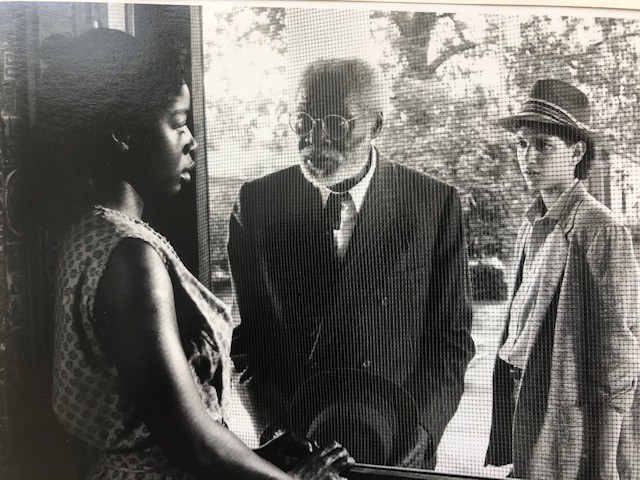
There were actually two different endings to the film – (Spoiler Alert) When Lightning Boy defeats Butler in the duel, he and Willie are instantly transported back to the crossroads to begin the next leg of their journey. But that’s not the way it was originally written.
“My original screenplay has Willie dying on a Greyhound bus,” Fusco told us. “Walter Hill’s father died that week if I recall, and it was very hard for him to shoot. So he shot an alternate ending that I did not like. My script was very different, more of a gritty realistic drama rather than a metaphysical romp that portrayed so many things literally and lyrically. My duel at the end took place in a defunct rail yard in Clarksdale. Kind of an underground blues competition between guitarists. It was left to the viewer to determine if it was really the Devil or not.
“Today, the movie has achieved a kind of cult status among musicians. The guitarists who have personally reached out to me to say so include Luther Dickinson, Cody Dickinson, Devon Allman, Duane Betts, Eric Krasno, and many others. Because of that, I am okay with the final outcome of the movie, but somewhere deep inside it still hurts.”
There were other scenes that ended on the cutting room floor as well – A few scenes never saw the darkness of the theater. There was a scene in a cemetery, a Gospel scene in a church, and someone who cut heads with Jack before Lightning Boy took up the challenge.
“My absolute most meaningful memory was rebuilding a church in Beaulah, Mississippi that had been destroyed in a storm,” Fusco shares. “We removed a massive tree that had crushed it and rebuilt the church for a gospel service scene (cut from the film) and then handed the restored church back to the community. Knowing that this came out of something I wrote made it all worth it.”
The person who cut heads with Butler (and lost) was none other than “Shuggie” Otis, the son of R&B pioneer Johnny Otis. Shuggie himself is a funk, rock, blues, R&B and psychedelic soul singer-songwriter and multi-instrumentalist who wrote the hit song “Strawberry Letter 23,” recorded by the Brothers Johnson.
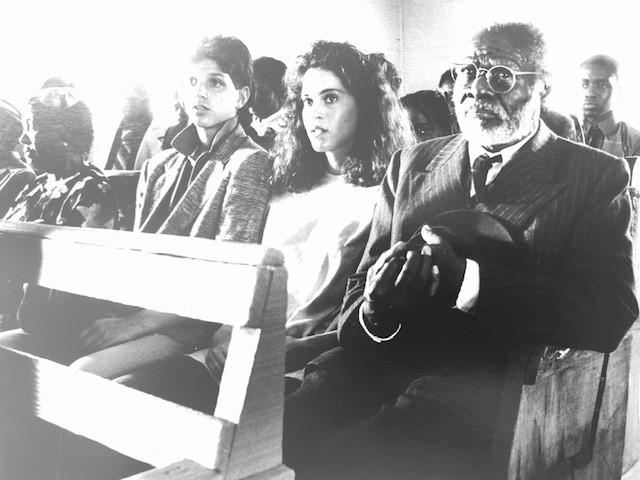
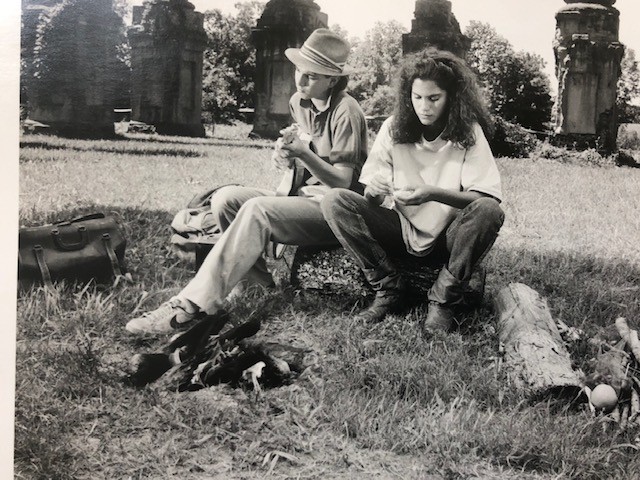
After all was said and done, did the film please its author? –
“It was a dream come true,” says Fusco. “Unfortunately, Walter Hill did not like having the 24 year-old writer who had lived the story on set. I forced my way on and just hung out with the blues guys and the local gospel community. I would learn from that experience to always attach myself as a producer and wield more power — or you don’t get my script.
“Aside from the opening with RJ, it (my favorite scene) would be ‘Good Man Feelin’ Bad’ the scene in the room, pouring rain outside, when Willie opens up about his life and Lightnin’ finally starts to get it on his ax.”
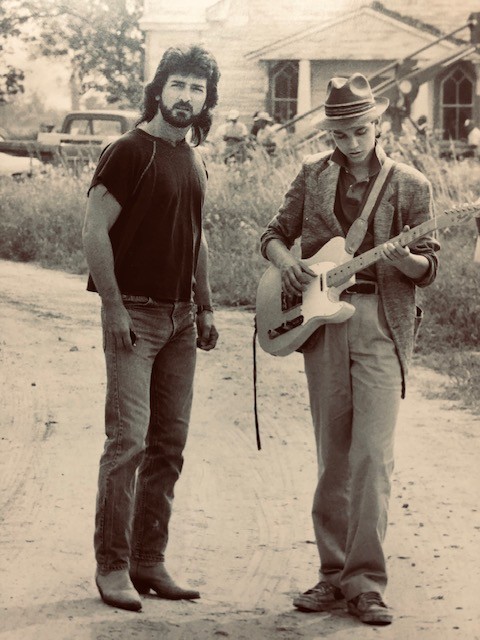
After 34 years, Crossroads has stood the test of time, a cult classic among musicians and blues fans alike. The Robert Johnson story, the legends of Willie Brown and Lightnin’ Boy and the incredible soundtrack make this a film that will be watched over and over again.
As for Fusco, you can see his original screenplay in the history of the blues archives at the University of Mississippi. He continues to write both scripts and songs, and has a new album with his band the X-Road Riders due out sometime this summer. But that’s another story…
John Fusco
*Photos courtesy of John Fusco with the exception of the theater poster.


